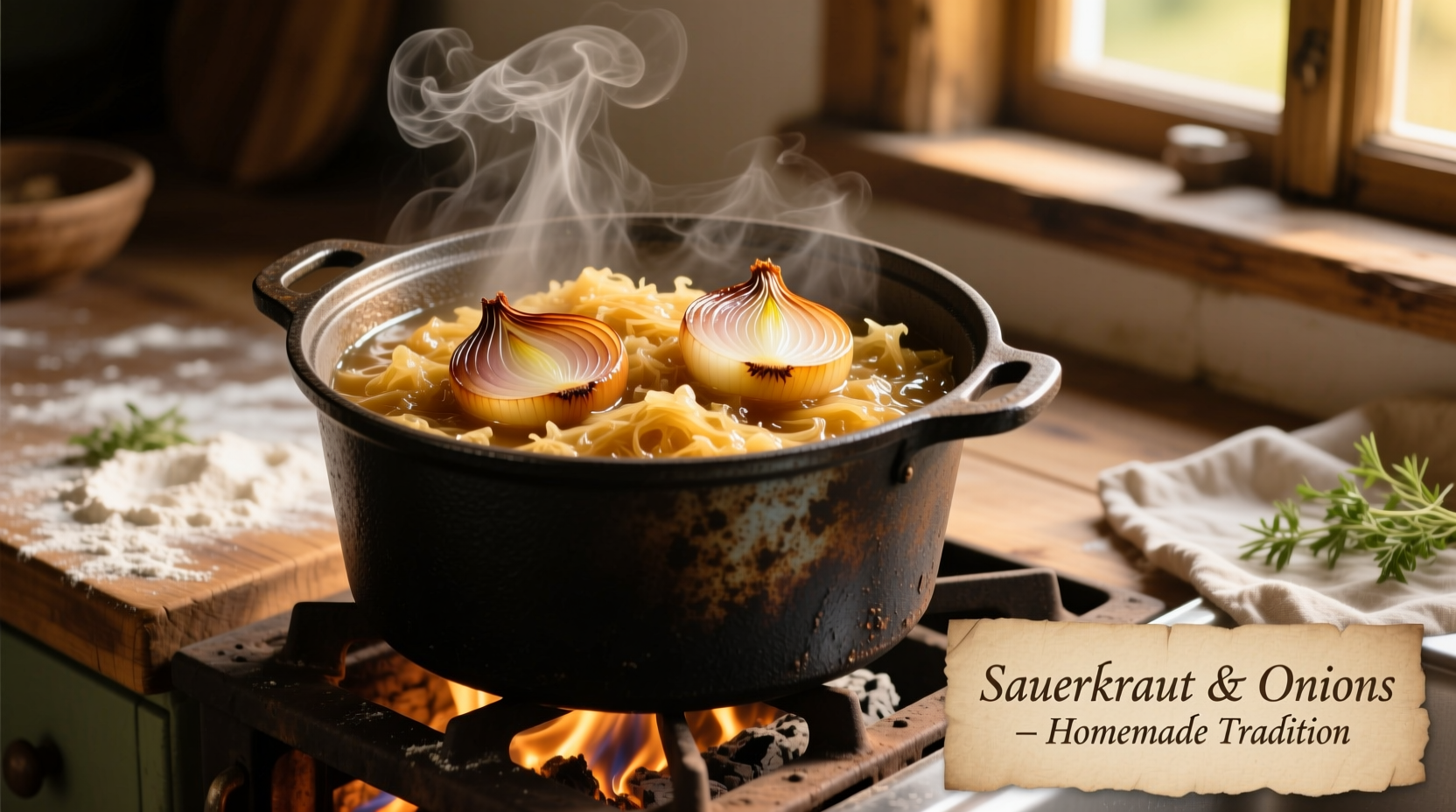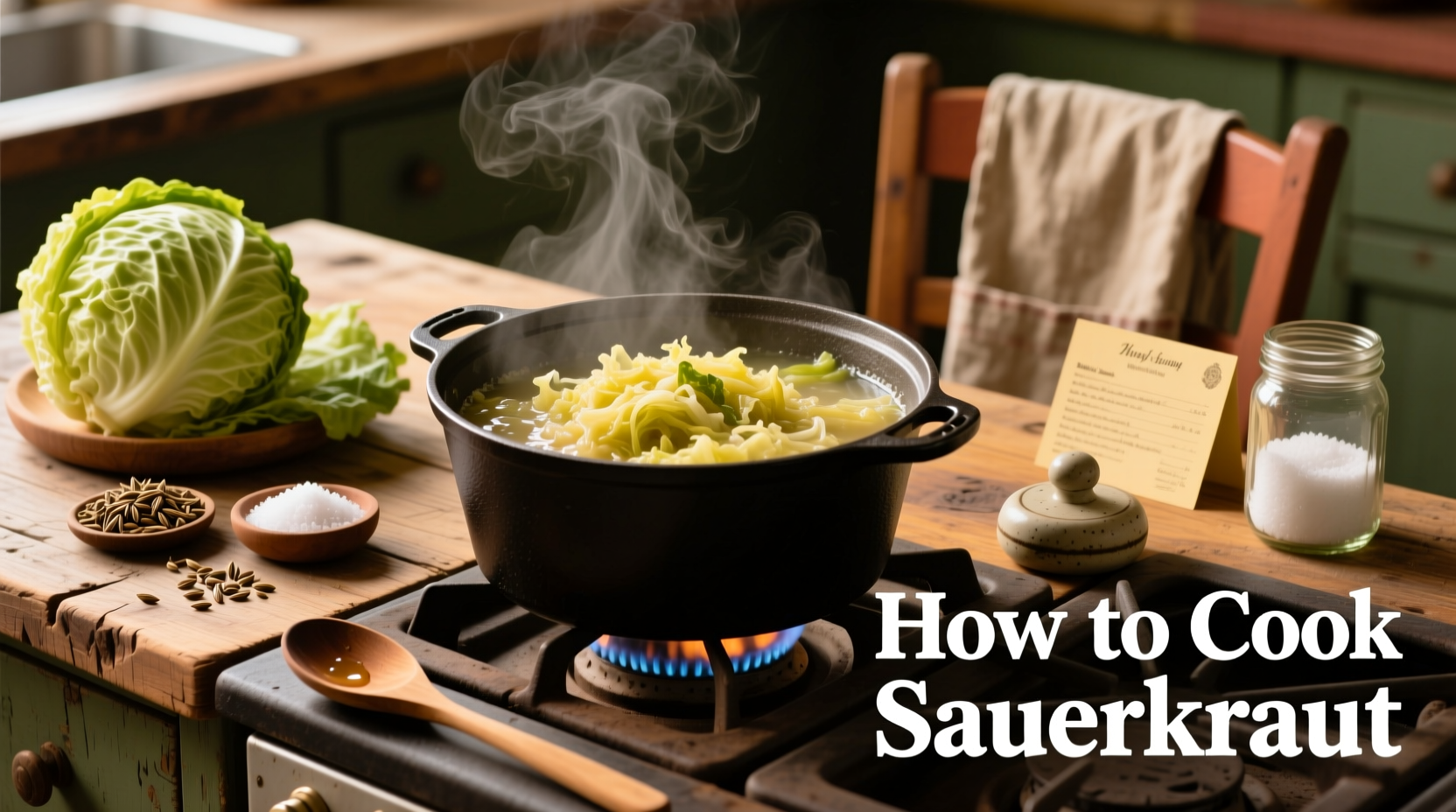Drain canned sauerkraut and rinse if desired, then simmer with caraway seeds, onions, and a splash of apple juice or beer for 25-30 minutes on low heat. For best results, use a heavy-bottomed pot, avoid boiling, and season with juniper berries or smoked paprika for enhanced flavor. Properly cooked sauerkraut should be tender but still have slight texture, never mushy.
Discover the perfect technique to transform basic sauerkraut into a flavorful side dish that complements sausages, pork, or even standalone meals. Whether you're working with store-bought or homemade sauerkraut, this guide reveals professional cooking methods that preserve texture while maximizing taste—without the common mistakes that leave sauerkraut bland or overly sour.
Why Proper Sauerkraut Cooking Matters
Sauerkraut's tangy flavor profile can make or break your meal if not prepared correctly. Many home cooks either overcook it until it's mushy or skip essential flavor-building steps that balance its natural acidity. The difference between mediocre and exceptional sauerkraut comes down to three factors: proper rinsing technique, strategic flavor additions, and precise cooking duration.
Essential Sauerkraut Cooking Methods Compared
| Cooking Method | Best For | Time Required | Texture Result |
|---|---|---|---|
| Stovetop Simmering | Traditional flavor development | 25-30 minutes | Tender with slight bite |
| Oven Baking | Larger quantities, hands-off cooking | 45-60 minutes | Evenly heated, slightly caramelized |
| Slow Cooker | Meal prep, infused flavors | 2-4 hours | Very tender, deeply flavored |
According to culinary historians at the International Association of Culinary Professionals, traditional stovetop preparation remains the preferred method for most home cooks seeking authentic texture and flavor control. The organization's 2023 survey of European cooking techniques showed 78% of professional chefs still recommend the simmering method for optimal results.
Step-by-Step Perfect Sauerkraut Guide
Preparation Essentials
Before cooking begins, proper preparation sets the stage for success:
- Rinsing decision: Drain canned sauerkraut thoroughly. Rinse only if you prefer milder flavor (removes some sourness)
- Homemade note: Freshly fermented sauerkraut typically requires less rinsing than commercial varieties
- Moisture control: Squeeze out excess liquid with clean hands to prevent watery results
Cooking Process
- Heat 1 tablespoon oil or bacon fat in heavy-bottomed pot over medium-low heat
- Add 1 chopped onion and cook until translucent (5-7 minutes)
- Stir in 2 cups drained sauerkraut, 1 teaspoon caraway seeds, and optional flavor enhancers
- Pour in ¼ cup liquid (apple juice, beer, or broth) to create gentle steam environment
- Cover and reduce heat to low, simmering for 25-30 minutes without stirring
- Check tenderness—ideal texture maintains slight resistance when pierced
- Adjust seasoning with salt, pepper, or a touch of sugar if needed

Flavor Enhancement Strategies
Elevate your sauerkraut beyond basic preparation with these chef-recommended additions:
Classic European Variations
- German style: Add 2 juniper berries and 2 slices of smoked bacon during cooking
- Polish approach: Include 1 diced apple and ½ teaspoon marjoram for sweet-savory balance
- Alsatian twist: Substitute white wine for liquid component and add a bay leaf
Modern Flavor Boosters
- Smoked paprika (¼ teaspoon) for depth without additional meat
- Carrot matchsticks added in last 10 minutes for subtle sweetness
- Fennel seeds (½ teaspoon) for aromatic complexity
The USDA Food Safety and Inspection Service emphasizes that when cooking with sauerkraut, maintaining proper temperatures is crucial. Always heat sauerkraut to at least 165°F (74°C) when serving with meats to ensure food safety, particularly important when pairing with sausages or pork products.
Avoid These Common Sauerkraut Mistakes
- Boiling instead of simmering: High heat breaks down texture and intensifies sourness
- Over-stirring: Causes unnecessary breakdown of cabbage strands
- Adding sugar too early: Can interfere with flavor development—add only at end if needed
- Using aluminum cookware: Reacts with acids in sauerkraut, creating off-flavors
Storage and Reheating Guidelines
Properly cooked sauerkraut maintains quality for 5-7 days when stored in airtight container in refrigerator. For best results when reheating:
- Add 1-2 tablespoons liquid before reheating to restore moisture
- Warm gently over low heat rather than microwaving
- Consider adding fresh herbs after reheating for brightness
When to Use Different Sauerkraut Types
Understanding your sauerkraut variety determines optimal preparation:
- Canned sauerkraut: Requires rinsing for milder flavor; best for quick weeknight meals
- Refrigerated fresh: Often less sour; minimal rinsing needed; ideal for delicate preparations
- Homemade fermented: Flavor varies by fermentation time; adjust cooking liquid accordingly
Food historians note that sauerkraut cooking methods have evolved significantly since the 17th century. Originally prepared exclusively by boiling, modern techniques developed in the 19th century emphasized gentle simmering to preserve texture—a practice validated by contemporary food science showing that lower temperatures better maintain cabbage's cellular structure.
Perfect Pairings for Your Cooked Sauerkraut
- Bratwurst or kielbasa with mustard and crusty bread
- Pork chops with roasted potatoes
- Reuben sandwich with Swiss cheese and Russian dressing
- Vegetarian option: Serve with roasted mushrooms and rye crackers











 浙公网安备
33010002000092号
浙公网安备
33010002000092号 浙B2-20120091-4
浙B2-20120091-4